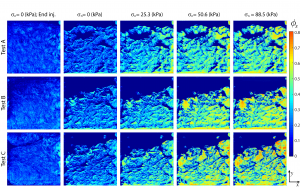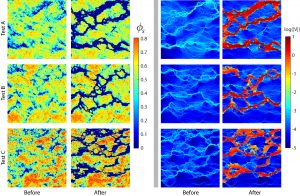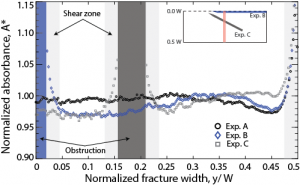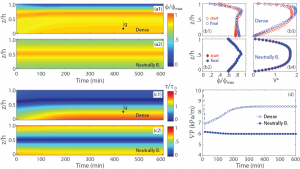Overview
My research interests are primarily in groundwater and fracture flow, a multidisciplinary field with strong links to soil science, hydrology, contaminant transport, geology, geochemistry, suspension flow and rheology, geologic fracture mechanics, petroleum engineering, energy and water resources. I am continually looking for new and innovative ways to conduct research, advance current understanding, and collaborate with other scholars. In the past nine years, I designed and carried out a series of experiments involving contaminant transport, fluid mechanics and particle image velocimetry, soil columns, fracture fluid flow, suspension flow, chemical analysis, and rheology. I have experience with the design, manufacture, and troubleshooting of experimental systems and experimental components, including mechanical and hydraulic pumps, electronic components, and optical components, among others. I am very much interested in the fundamental mechanisms controlling coupled flow processes in the subsurface at various scales, e.g., pore-scale, bench-scale, and field-scale.
Research Interests
Hydrogeology, water resources, groundwater and fracture flow, multi-phase fluid flow, geologic fracture mechanics, fluid mechanics, suspended particles flow and settling, hydrologic modeling, groundwater resource management
Research Projects
Use of fiber optic distributed temperature sensing (FODTS) technology to study spatio-temporal evolution of infiltration rates at a managed aquifer recharge (MAR) facility. Managed aquifer recharge is the intentional and deliberate replenishment of groundwater for later recovery. One of the most widely used MAR facility is infiltration/spreading basins (ponds) which are effective at percolating water. Clogging (physical, chemical, and biological) is a significant problem for these basins as it reduces the percolation rate and leads to loss of production. By placing a passive FODTS system at a recharge basin, the infiltration rate of water can be measured in near-real-time with very high spatial resolution. Studying the spatio-temporal evolution of infiltration rates within the basin can help water managers determine when a certain area of the basin has become clogged and it can help direct resources to target specific regions to remediate. Therefore, FODTS offers a valuable tool to better manage groundwater recharge facilities and has the potential to save money by reducing the amount of time, labor, money, resources, and downtime needed to clean or remediate a clogged recharge basin.
Effect of environmental factors and water quality on percolation rates of a groundwater recharge facility. The Orange County Water District (OCWD) has performed a series of soil column experiments to investigate the cause of fast percolation decline at one of its basins exclusively receiving advance treated recycled water. Though it was expected that the basin will eventually clog, due to physical, chemical, or biological activity, the rate of clogging was not expected to be as high as it was due to the high purity of the treated water. For these experiments, I made improvements to the experimental design and helped with data collection and interpretation. The results for these experiments suggest a correlation with pipeline transport and possible physical and biological sloughing of material inside the pipeline.
Experimental and numerical investigation of multi-component proppant (sand-polymer fiber) flow and settling inside a fracture subjected to an applied stress. I investigated the settling behavior of low concentration sand-fiber mixtures and their response to an applied stress. My results show that adding fibers to the sand-fluid mixtures leads to the formation of isolated islands of solids with large solids-free regions. The observed solid distribution caused the solids to act like pillars supporting the applied stress. Numerical simulations showed this solid distribution led to significantly higher fracture permeability than a fracture filled with uniformly distributed proppant.
Effect of flow geometry on concentrated proppant suspensions. I conducted bench-scale experiments focused on understanding the mechanistic behavior of concentrated suspensions (solid-fluid mixtures) as they flow through fractures. The experiments demonstrated the importance of shear-induced particle migration in developing non-uniform solid distributions. My results suggest that particle migration led to regions of high-viscosity and low-viscosity, which resulted in an unexpected velocity distributions and transient pressure gradient across the fracture. Such flow behavior may be important to suspensions in chemical engineering applications, petroleum engineering, and environmental remediation.
Effect of water saturation and flyash concentration on nitrate transport. Nitrate is one of the most widespread contaminants found in groundwater. A substantial portion of nitrate contamination is derived from anthropogenic activities, e.g., fertilizer applications in farming. I designed a soil column experiment to investigate the effect that various levels of fly-ash amendment and soil saturation have on the rate of nitrate migration through the column and the hydraulic properties of the soil. The results showed that adding fly-ash reduced the hydraulic conductivity and increased the soil’s water retention. Additionally, adding fly-ash significantly reduced the rate of nitrate transport through the soil column, especially at low saturations. My analysis suggests that anion exclusion was partly responsible for the retardation and retention of nitrate inside the soil.






